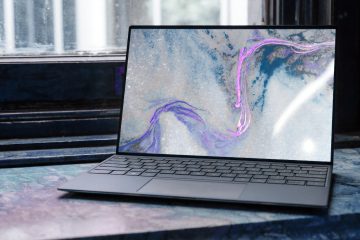Your gaming PC’s motherboard is a critical component. It serves as your central nervous system, allowing all of your electrical components to interact with one another. So, when creating a new rig, make sure it has the greatest motherboard you can purchase since if it doesn’t perform properly, there’s not much use in having a gaming PC at all. With so many motherboards on the market, picking which one to purchase may be difficult when determining what is best suited for your requirements. There are various factors to consider when selecting a motherboard; nevertheless, here are our top 5 recommendations when shopping for the finest motherboard.
Choose a Side Intel or AMD
You must determine whether your gaming machine will be powered by an Intel or an AMD CPU.
Intel CPUs are normally more costly, but they may give quicker speeds and use less power than AMD processors. If you’re searching for a high-end gaming computer, an Intel motherboard is preferable to an AMD one; nevertheless, working with a limited budget may be impossible.
AMD motherboards may also vary in price based on the capabilities they include, but in general, they are less expensive than their similar Intel boards, which is why most people choose them when creating inexpensive, entry-level machines. There is no right or wrong answer here, but before choosing a motherboard, consider the sort of CPU that will be operating on it to verify the two are compatible.
Form factor
The size of the form factor DOES MATTER. It may come as a surprise to you that the motherboard has a form factor, but it is true. Form factor refers to the three sorts of motherboard sizes that are now available on the market: E-ATX, ATX, Micro-ATX, and Mini-ITX are the four types of ATX motherboards.
E-ATX
Extended ATX motherboards are much bigger than conventional ATX motherboards. They may be used in both conventional ATX and even bigger HPTX enclosures.
ATX
Standard-size motherboards are what most people think of when they hear the word motherboard, however, they may also be referred to as full-sized boards. These motherboards are typically found in cases that accommodate micro or Mini ITX products, making them popular among computer enthusiasts today.
Micro-ATX
Because this form factor is about half the size of an ATX board, you will have fewer PCI slots to deal with if you pick this type/size of the motherboard. It does, however, have enough expansion space to support a mid to high-end graphics card, making it a suitable alternative for budget-conscious gamers.
Mini-ITX
Mini-ITX motherboards are around one-fourth the size of an ATX motherboard, but that doesn’t mean they lack all of the capabilities you need to operate your gaming PC effectively. They still have enough expansion slots to enable contemporary graphics cards to work to their full potential. This is usually the size of board you’ll want to go with if you want the possibility of a modest build without compromising performance.
RAM – The Importance of Speed
RAM is an important component of your computer’s motherboard, and you’ll need a lot of it if you want to play the newest games at their top settings. The criteria for acquiring RAM is simple: if you can afford 16 GB or more, go with that capacity. If not, 8 GB will do as long as you don’t intend to play many contemporary AAA games.
However, bear in mind that some modern games have more critical and demanding needs than ever before, so when creating a gaming PC, it may be wise to err on the side of having enough RAM rather than too little.
Each board has its own constraints in terms of how much RAM it can handle; however, many will let you add up to 64 GB of RAM if you can afford it.
GPU – Single or Multi?
Another important component of your motherboard is the graphics card, and if you want to play the newest games, you should look for a board with two or more GPU slots.
The issue is that not all boards support multi-GPU technology, but some do. It is critical to get a motherboard having this functionality. When you add a second graphics card to your gaming PC, you will notice a considerable increase in frame rates during hard gameplay sessions.
The disadvantage of using this board is that it is more expensive than most other motherboards on the market today; nonetheless, it is a minor amount to pay for a big boost in gaming speed and efficiency.
Connectivity
Check that you can connect everything. To play the newest games, a contemporary gaming PC demands a plethora of various peripherals, and it’s critical that your motherboard can connect them all without trouble. This means you should look for a board with several USB 2.0 ports as well as at least seven 3.0 ports so you can easily connect all of your devices using an appropriate cable or two rather than having to rely on wireless connectivity solutions, which may have latency issues when playing online games.
It’s also a good idea to get a model that supports Thunderbolt technology, which is a considerably quicker standard than USB 3.1, which is still used by many computers today for peripherals like external hard drives, displays, keyboards, mice, and so on. The finest motherboards support both standards, however not all boards will offer this degree of communication.







